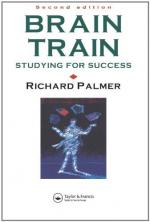|
This section contains 412 words (approx. 2 pages at 300 words per page) |
Computer systems can construct images of the human brain. These noninvasive procedures are valuable for studying how abused drugs affect the brain.
Imaging techniques that use nuclear medicine (radiation) are positron emission tomography (PET) and single photon emission computed tomography (SPECT). For these imaging studies, human volunteers take small amounts of radioisotopes (radioactive material). PET and SPECT provide a visualization of their brains and a measurement of biochemical processes. A more recent imaging technique is functional magnetic resonance imaging (MRI), a technique that makes it possible to construct brain images without radiation.
PET scanning is most commonly used to measure brain metabolism (consumption of glucose) or blood flow in the brain. PET is also used to map and measure specific brain-cell receptors for drugs and neurotransmitters (brain chemicals). Brain metabolism and brain blood flow both reflect the activity of brain cells. Under normal circumstances, brain metabolism and blood flow are tightly coupled. The most active brain cells require the most glucose, a sugar that is the primary energy source of the adult brain. Brain regions that contain the active cells also require high rates of blood flow for the delivery of nutrients and oxygen. In some conditions, however, including those caused by some drugs, brain metabolism and blood flow rates may be uncoupled. SPECT also produces useful images using similar techniques, but the images are not as clear and precise as those produced by PET.
Functional MRI produces very clear and precise brain images. Advances in MRI technology have made it possible to measure functional blood volume in the brain. Blood volume is closely related to blood flow. Activation of a brain region causes increased blood flow to that region. The activated region receives more oxygen than it requires for the increased activity. The oxygen then accumulates, as do the blood cells that carry the oxygen. MRI can measure the resulting volume of blood.
Current imaging techniques can indicate the serious and long- term effects of drugs of abuse. Such information may lead to greater understanding of the causes and the consequences of substance abuse. Ultimately, imaging techniques may help researchers find more effective prevention and treatment strategies.
 A magnetic resonance imaging (MRI) scan of a normal human brain can help show how the brain works. The green dot is the hypothalamus, which regulates the body by monitoring factors such as blood pressure and temperature.
A magnetic resonance imaging (MRI) scan of a normal human brain can help show how the brain works. The green dot is the hypothalamus, which regulates the body by monitoring factors such as blood pressure and temperature.
See Also
|
This section contains 412 words (approx. 2 pages at 300 words per page) |


